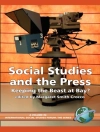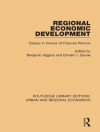Rising unemployment has become one of the most challenging problems for economic policy in many developed economies over the last fifteen years. In the second half of the 1970s and during the first half of the 1980s the labour market situation worsened dramatically. For the OECD area as a whole, unemployment as a percentage of the civilian labour force went up from 3.3 percent in 1974 to 8.1 percent in 1985. The increase in unemployment rates was even more pronounced for OECD-Europe, where it climbed from 3.3 percent to 10.5 percent in this period. Table 1.1: Unemployment Rates in some a ECD Countries, 1974-1989 yearly average 1989 1974{79 1974 1979 1985 1980/85 1985/89 USA 5, 6 5, 8 7, 2 5, 2 6, 8 8, 1 6, 2 UK 2, 2 4, 5 11, 6 6, 5 4, 2 10, 0 9, 7 3, 3 8, 3 7, 3 3, 5 6, 6 7, 9 FRG 2, 1 2, 4 1, 3 1, 5 2, 4 2, 2 Sweden 1, 6 1, 7 Austria 1, 1 1, 7 3, 6 3, 4 1, 5 3, 0 3, 5 Austria*) 1, 5 2, 0 4, 8 5, 0 1, 9 3, 6 5, 3 OECDEurope 3, 3 5, 7 10, 5 9, 0 4, 8 9, 1 10, 0 OECD 3, 7 5, 2 8, 1 6, 6 5, 0 7, 7 7, 5 *) national definition – see footnote 1). Source: OECD, 1989; BMSA.
Josef Christl
Unemployment/Vacancy Curve [PDF ebook]
Theoretical Foundation and Empirical Relevance
Unemployment/Vacancy Curve [PDF ebook]
Theoretical Foundation and Empirical Relevance
ซื้อ eBook เล่มนี้และรับฟรีอีก 1 เล่ม!
ภาษา อังกฤษ ● รูป PDF ● ISBN 9783642503047 ● สำนักพิมพ์ Physica-Verlag HD ● การตีพิมพ์ 2013 ● ที่สามารถดาวน์โหลดได้ 3 ครั้ง ● เงินตรา EUR ● ID 6325528 ● ป้องกันการคัดลอก Adobe DRM
ต้องใช้เครื่องอ่านหนังสืออิเล็กทรอนิกส์ที่มีความสามารถ DRM












